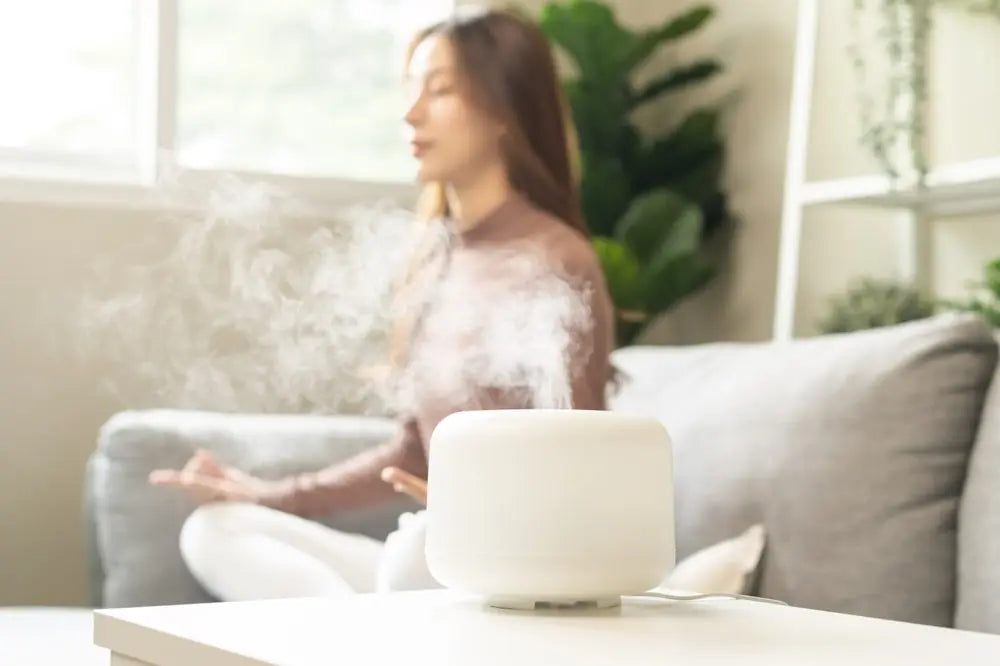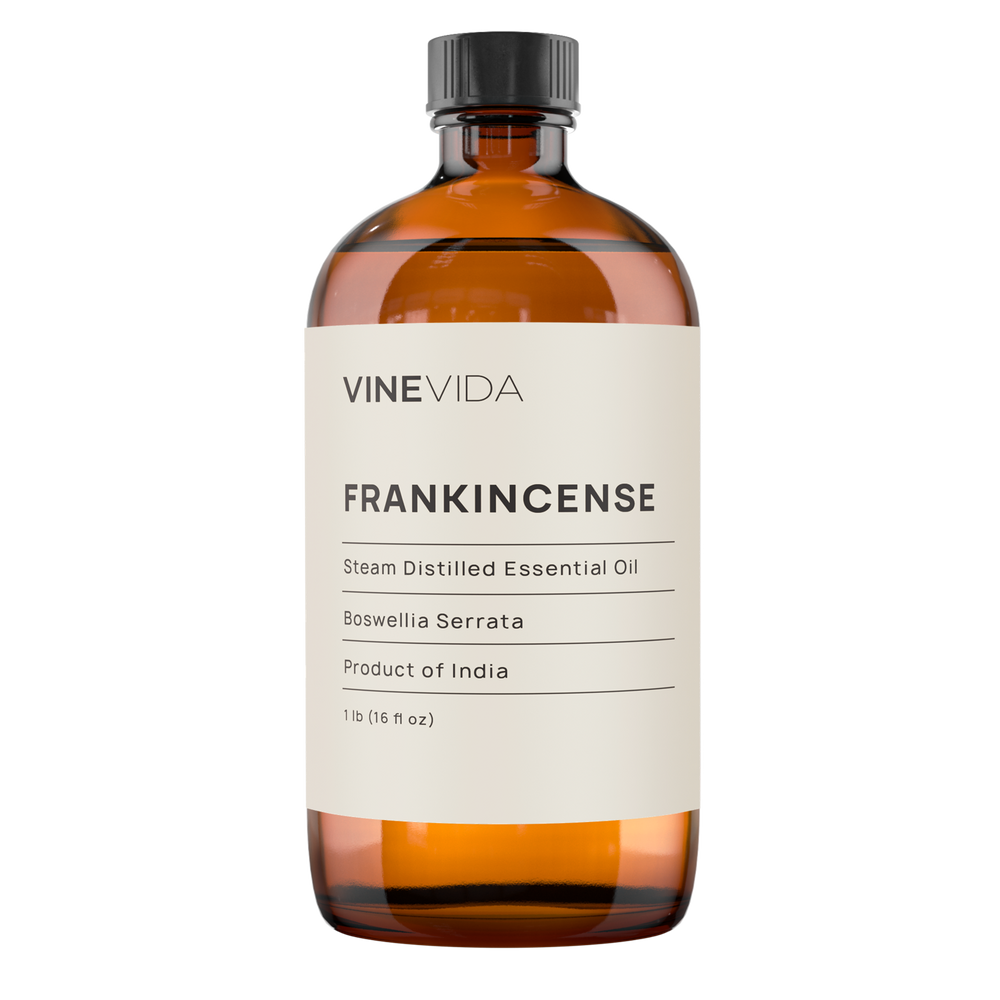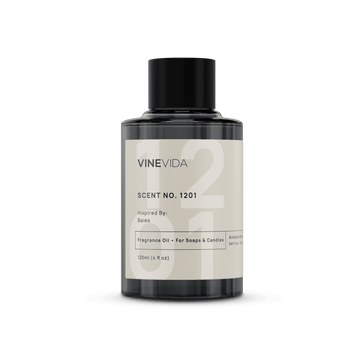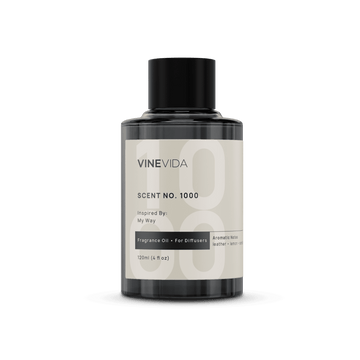Combining meditation with essential oils brings speedy panic relief. Slowing and deepening our breathing slows the heart rate.
Many essential oils contain chemical constituents proven to interact with our parasympathetic nervous system, which slows heart rate and deepens breathing.
Using essential oils mindfully can be incredibly helpful for panic attacks. In this post, we discover how to use essential oil blends for meditation to calm panic.
What is Panic?
A panic is a form of anxiety and a feeling of unease.
Anxiety can start as very mild worries or nerves, but can grow to the most severe of anxieties and fears, which is panic. Panic is often related to wanting to run away, which may explain why our heart rates and breathing speed up in what is known as a ‘Panic Attack.’
During panic attacks, the sufferer experiences intense rushes of mental and physical symptoms, which can be very frightening because everything feels so real. They can be very intense and distressing. Often, they start without warning or apparent reason, making it all the scarier.
People who have experienced panic attacks may start to avoid certain situations for fear of triggering another. Over time, this creates never-ending cycles with people living "in fear of fear." These cycles add to the anxiety and may ultimately cause more panic attacks.
What Happens To Your Body During A Panic Attack?
Scientists have studied panic for a long time, and there are various reasons why we may experience panic. Panic attacks are still not well understood.
The sense of panic starts in the body, creating chemical and nerve processes within your brain. Conversely, the panic may be initiated by the brain, which starts the onset of a panic attack to manifest in your body.
It has been suggested that genetics or alterations in the brain's normal function may be at play.
Stress, of course, is a large factor in anxiety-driven panic.
The HPA Axis
The amygdala is a brain structure viewed as the epicenter of fear in our brain.
The amygdala's job is to alert us to danger in the environment. When the amygdala perceives fear, it sends a distress signal to your hypothalamus.
Think of your hypothalamus as a command center on the brainstem, responsible for coordinating and regulating your body's involuntary functions. This would include processes like breathing, heart rate, and blood pressure...
The hypothalamus then sends messages to the pituitary gland, which sends hormones to trigger the adrenals. These glands, which sit atop your kidneys, then pump your bloodstream full of their hormones, including adrenaline and cortisol.
Adrenaline and cortisol are the chemical messengers that engage your body’s survival reflexes and tell it to be ready to take defensive action. It is also called the ‘fight or flight response.’
As the chemicals flood your bloodstream, your pupils dilate, your mind opens to take in the information around you, and your heart beats faster.
Understanding that the body provides you with information your ancestors would have needed to escape a bear is useful.
When you have a panic attack, your mind is processing escape routes!
Your Body Tries To Protect You
When your breath rate increases, your body can take in more oxygen. More glucose is available to the brain and muscles to help you run quickly, leap, or jump safely.
Blood is then diverted from your extremities, like your fingers, toes, and, interestingly, your stomach. It rushes into the major leg and arm muscles, which cause the strange physical panic attack symptoms.
Also Read: Best Essential Oils For Meditation: Helping To Keep You Mindful
Symptoms of A Panic Attack
| Symptoms of A Panic Attack | ||
|---|---|---|
| Usually, you would experience one or more of these symptoms during a panic attack. | ||
|
|
|
How Do I Know It Is A Panic Attack?
A panic attack is classified when symptoms occur rapidly or over a few minutes. An attack usually peaks and subsides within 10- 15 minutes.
It is important to rule out that you’re not experiencing any heart-attack-specific symptoms, which would include pressure in the chest or pain that builds or radiates into the arm or jaw.
Once that has been ruled out, it is key to remember that panic always passes. Admittedly, that can be hard when you feel like you’re losing control or suffocating.
Dealing With A Panic Attack
We will look a little later at some tangible things you can DO to calm a panic attack later. Still, one of those fundamental things you can do for yourself is to recognize it as a panic attack, not a more serious medical or physical issue.
It can be difficult to accept that nothing physically unsafe is happening to you, even though it might FEEL like it.
Using affirmations like “My body is designed to keep me safe and protect me, can help challenge your thinking.
A strong belief that the panic attack IS temporary and will pass is key to working through it.
This strength of belief can also help reduce the frequency and severity of panic attacks with practice over time. The more you do it, the easier it will become.
Using Essential Oil Blends for Meditation To Calm Panic
Regulating your breath is fundamental to calming a panic attack; you may have heard the popular theory about breathing into a paper bag.
Meditation brings focus to our breathing pattern, and having a couple of very simple meditations in your toolbox can quickly relieve panic attacks.
We naturally breathe between 12- 20 breaths a minute, but when we hyperventilate in a panic attack, that can easily be doubled.
We want to try to engage a parasympathetic response in the body - this is the cool, calming brother of the ‘fight or flight’ response. We can do this by slowing our breath down to 5 or 10 breaths per minute.
We need to ensure that they are deep breaths and that we are exhaling for longer than we inhale. For instance, we might breathe in for 5 counts and exhale for 8-10.
Another strategy is to count backward from ten, which many people find distracts them from the panic.
Breathing to stimulate a parasympathetic response sends acute signals to the brain that we are relaxed and have nothing to fear. The brain then sends signals to the heart muscles that regulate its pace, encourage it to slow, and help us to feel calm again.
I am sure you have realized that you can use this technique as you feel panic rising to stop a panic attack from taking hold. Practicing this meditation breathing technique could help you reduce the severity of the attack and the frequency with which you might experience them.
Using essential oil blends for meditation to calm panic can help stop that vicious cycle of avoidance. To make us feel calmer generally and to support emotional well-being.
We can use wonderfully natural and fragrant essential oil blends for meditation to calm panic.
Also Read: Meditations For Children With Essential Oil Blends
Best Essential Oils For Panic
The initial essential oils you would choose here are very similar to those with which you would treat immediate shock or trauma; Neroli and Myrrh are two of my favorites, as well-known ‘go-to’ calming oils like Lavender and Chamomile.
By layering an essential oil blend, we can treat that initial response and calm the nervous system, slow our breathing rate, and finally, help us relax and find that elusive sense of peace and calm.
Neroli
Contains a constituent called linalool, which has sedative effects on the nervous system. Making it the perfect first choice to calm a panic attack. Linalool is found in many calming essential oils, including lavender.
Myrrh
In Aromatherapy for Healing the Spirit, Gabriel Mojay says that Myrrh essential oil instills deep tranquility of mind and is one of the principal oils for overthinking, worry, and mental distraction. While Nerolis calms our nervous system, Myrrh calms our mind.
Roman Chamomile
Always a popular choice in essential oil blends for meditation. A great essential oil, it reduces the tension and rigidity that panic can create in our body and helps bring softness back.
Lavender
Am I sure I don’t have to sell you on Lavender essential oil's ability to bring relaxation with its calming effects? It is used the world over to bring relaxation and assist in sleep.
Frankincense
Frankincense slows the breath and is comforting. If you are spiritual, you might say it helps you feel God.
Vetiver
Vetiver’s energy is heavy like a warm, comforting blanket. It slows the breath and brings the energy down from the head into the body, calming, soothing, and grounding.
Cedarwood
A tremendous oil for getting rid of negative thoughts.
A Simple Breathing Exercise For Panic
Use this breathing technique when you feel the rumblings of panic, and it can be used for whatever stage of panic you are experiencing, from mild anxiety to a full-blown panic attack.
Use the essential oil blends for meditations to calm the panic in the way you feel is best suited to you. Direct inhalation is very effective for use with this breathing technique. You may wish to use Frankincense essential oil to help slow your respiration rate.
- Bring your attention to your breath.
- You are aiming to slow your breath down.
- Inhale 1, 2, 3, 4, 5.
- Exhale 1, 2, 3, 4, 5, 6, 7, 8, 9, 10.
- Inhale 1, 2, 3, 4, 5.
- Exhale 1, 2, 3, 4, 5, 6, 7, 8, 9, 10.
- Repeat until you feel your breath slow to 5 - 10 breaths a minute.
Three Meditations to Calm Panic
Stage 1 - Mind Running Wild
Use the matching essential oil blend in the way you feel is best suited to you. Direct inhalation is very effective for this meditation.
Start this meditation with 3 rounds of the breathing technique above, and then just be conscious of keeping your breath consistently at a reduced pace.
- Imagine you are in a crystal clear sea cove, perfectly safe in this water, and nothing can harm you. Repeat to yourself, “ I am safe here.”
- Sink into the water, dull out the world's noise, and sink right down until you sit on the soft sandy sea bed. Nothing to bother you here besides the odd brightly colored fish swimming past you.
- Calm your mind. If a thought intrudes, put it in an air bubble, let it go, and watch it rise further and further toward the surface until it is gone out of sight.
- Clear your mind and focus on breathing (yes, you can breathe under this magic water). Any time a thought pops up, put it in the bubble and watch it slowly rise and disappear.
- When you feel that your mind is clear and your breathing has slowed, check your anxiety level.
- If you still feel anxious, stay under that beautiful, quiet, still water, focus on your breathing a little longer, and pay attention to letting go of any stiffness in your body.
- If your anxiety has reduced enough, let yourself rise to the surface. Bursting through to the beautiful warm sunshine upon your face.
- Give thanks to the magical waters in this sea cove and remind yourself that you can return here anytime to calm your mind and reduce your anxiety.
Stage 2 - Breathing A Bit Too Fast
Use the matching essential oil blend in the way you feel is best suited to you. Direct inhalation is very effective for this meditation.
Start this meditation with 5 rounds of the breathing technique above, and then just be conscious of keeping your breath consistently at a reduced pace.
- Imagine standing in a snowy forest; the trees are kissed with white, fluffy snow, and the sun shines and surrounds you with a million frosty diamonds.
- You are dressed to be warm and cozy and have big furry snow boots on to keep your toes toasty. They crunch in the snow as you walk.
- You can see your breath in the air, like a fine mist, twisting and twirling in fine ethereal tendrils that evaporate into the cold, frosty air.
- Take a deep breath in your essential oil blend, and let your nose define those notes of Frankincense. Feel it slowing your breath and calming you.
- Let the breath go, and as you exhale, you see that stunning, calming gray/green color in the mist of your breath. Watch it as it swirls and climbs in tendrils on the cold air, just to disappear.
- Notice how blue the sky above you is.
- Take your next deep breath and let your nose find those resinous notes of sacred Myrrh. Breathe it in deeply and fill your body with that wonderful golden amber color of Myrrh resin. Feel that deep tranquility in your mind that Myrrh brings.
- Let the breath go, and as you exhale, you see that relaxing, soothing golden/ amber color in the mist of your breath. Watch it as it swirls and climbs in tendrils on the cold air, just to disappear.
- Notice the sounds of the birds in the forest trees. How many are there around you? Can you see any?
- Let the breath go, and as you exhale, you see that refreshing grass green color in the mist of your breath. Watch it as it swirls and climbs in tendrils on the cold air, just to disappear.
- Notice how the snow and frost glisten on the trees and how the tiniest breeze causes a magical glimmering of frosty specks of light.
- Breathe in all these wonderful essential oils, and feel the fragrance and essences of these oils fill your body and breath. Feel them relaxing your body and mind, calming your breath, and reducing your respiration rate.
- Keep breathing in the fragrance of these essential oils until you find your equilibrium returned.
- Bring your attention back to the forest, and then return home.
Stage 3 - Full Blown Panic
Use the essential oil blend in the way that best suits you. Direct inhalation is very effective for this meditation.
Start this meditation with 10 rounds of the breathing technique above, and then just be conscious of keeping your breath consistently at a reduced pace.
- Imagine yourself in a place that feels safe to you.
- There is a burgundy-colored blanket right next to you; wrap yourself up in it like a magical cloak of protection.
- Breathe deeply and exhale very slowly, controlling your exhale.
- Say to yourself, “I am safe; I am protected.”
- Breathe deeply and exhale very slowly, controlling your breath again on the exhale.
- Say to yourself, “This is temporary, and it is passing.”
- Understand how warm and comfortable that blanket feels around you and how nice it is to be enveloped in its coziness. It feels wonderful. You feel safe.
- Breathe deeply and exhale very slowly; try to do it as slowly as possible.
- Say to yourself, “ I feel it passing and know I am safe.”
- Use the essential oil blend as you inhale, and pay particular attention to controlling the exhale as steadily as possible.
- Repeat the stages, if necessary, until you find your balance and equilibrium returned.
On a Different Note
This is a very effective meditation for those who experience a chronic pain flare-up. Controlling the breath can contribute to managing the sensations and experience of pain. I find this technique useful for Neuropathic pain, where it is easy to feel that something awful is wrong, and we think our health is in danger.
One-Armed Seagull Technique
While on a Mental Health First Aid course some years ago, I learned the One Armed Seagull Technique, and I have to say it is the single most effective technique I have ever used with someone experiencing an acute panic attack.
You sit in front of them and put your arm out to the side of you. You move your arm up and down to match their initial respiration rate.
The aim is to slow it down, so you ask them to concentrate on your arm. Combined with audible breathing techniques, you gradually slow the rate at which your arm rises and falls.
Their breath will naturally fall into that rhythm, and you keep going, talking gently to them all the time until the sense of panic has gone, they are relaxed, and their breathing rate has normalized.
It is incredibly effective and has to be seen to be believed.
One final word on this is that it is natural to want to reach out and touch someone experiencing a panic attack to calm them down and reassure them. This, for many reasons, should be advised. Many people experiencing panic have sensory overload, and being touched adds to that. Resist that reassuring touch and talk to them gently and consistently unless they ask you otherwise.
Also Read: How To Use Essential Oils To Meditate
How To Make Your Essential Oil Blends For Meditations to Calm Panic
This is a simple project where you mix essential oils with a carrier oil and use them either in a dropper bottle or rollerball dispenser. You can keep it quick and easy to use in your purse or pocket.
Equipment
- Measuring jug and spoons
- Stainless steel spoon or stirrer
- Funnel
- 20 ml Dark amber glass dropper bottle or 2 x 10 ml rollerball dispenser
- Labels
Ingredients
- 19 ml Carrier oil of your choice. I recommend Sweet Almond because it has a good shelf life.
Selection of Essential Oils
- Adults up to 12 drops (3%)
- People in a weakened state up to 8 drops (2%)
- Children up to 4 drops (1%)
Method
- Carefully measure out 19ml of carrier oil for the dropper bottle or the two roller balls into the measuring jug.
- Add your essential oil blend and mix thoroughly.
- Using a funnel, decant into the bottle or rollerballs. Cap tightly
- Label clearly and accurately, including all the essential oils used in the blend.
Three Essential Oil Blends for Meditation to Calm Panic
I have created essential oil blends that target the stages of accumulating panic. Using the essential oil blends alongside the meditative practice can help us sometimes avoid the full-blown onset of a panic attack.
Using essential oils regularly to support your meditation practice has an accumulative effect over time.
| Stage 1 - Mind Running Wild | ||
|---|---|---|
| 20 ml/0.67 fl oz of Sweet Almond carrier oil. | ||
Essential Oils Blend for an Adult
|
||
| 4 drops of Roman Chamomile Essential Oil (Anthemis nobilis L.) | 4 drops of Sweet Orange Essential Oil (Citrus sinensis L) | 4 drops of Myrrh Essential Oil (Commiphora myrrha) |
| Safety: Do not use it in the first 37 weeks of pregnancy. | ||
| Stage 2 - Breathing A Bit Too Fast | ||
|---|---|---|
| 20 ml/0.67 fl oz of Sweet Almond carrier oil. | ||
Essential Oils Blend for an Adult
|
||
| 4 drops of Frankincense Essential Oil (Boswellia serrata) | 4 drops of Myrrh Essential Oil (Commiphora myrrha) | 4 drops of Vetiver Essential Oil (Vetiveria zizanoides) |
Safety:
|
||
| Stage 3 - Full Blown Panic | ||
|---|---|---|
| 20 ml/0.67 fl oz of Sweet Almond carrier oil. | ||
Essential Oils Blend for an Adult
|
||
| 2 drops of Neroli Absolute (Citrus aurantium) | 2 drops of Myrrh Essential Oil (Commiphora myrrha) | 2 drops of Frankincense Essential Oil (Boswellia carterii) |
| 2 drops of Roman Chamomile Essential Oil (Anthemis nobilis L.) | 2 drops of Lavender Essential Oil (Lavandula angustifolia.) | 2 drops of Helichrysum Essential Oil (Helichrysum splendida) |
Safety:
|
||
How To Use These Essential Oil Blends For Meditations To Calm Panic
You can use these essential oil blends for meditation to calm the panic in various ways. Using these essential oils diluted in carrier oil offers both economical and versatile preparations for using these meditations to calm panic.
Dropper Bottle - Using the dropper bottle, you dispense a couple of drops into your hands, rub them together, and inhale through your hands. Placing your hands over your nose and breathing out through your mouth helps to remind you of that meditative practice to calm your breath.
Rollerball - You can use a rollerball dispenser and do the same thing, or place it at the pulse points on your wrists and temples. I also like to place it on my throat when it meets my collarbones. Remember, inhaling the essential oils is very effective, so make sure you can smell them too.
Meditation Spray - I love using these essential oil blends in Meditation sprays, to be used before and after meditation. Alternatively, it can be well utilized while experiencing a panic attack. Add the 20 ml / 0.67 fl oz essential oil and carrier oil blend to 40ml / 1.35 fl oz of spring water and 40ml / 1.35 fl oz of vodka, decant into a spray bottle, and shake well before each spray.
Safety: Shake well, and do not spray directly in the face.
Room Fragrance - Your essential oil blend can also be used in a scented candle or an essential oils diffuser- follow your manufacturer's guidelines for this. It can be utilized to help keep you calm over the course of the day.
Final Word
We have examined how anxiety can lead to an accumulating sense of panic. We have explored the effects it has on our bodies and why. Understanding why this is happening to us and the process that is going on in our bodies can help us rationalize what is going on when we go into panic mode.
Appreciating that it can be triggered by something as innocuous as the caffeine in our morning tea or the scent or sound of something that reminds us of traumatic events.
Focusing on the knowledge that it will pass and that it is temporary physical and mental feelings exacerbated by the body’s response can help navigate a panic attack.
Recognizing the importance of breathing techniques in relieving and alleviating panic. It is at the top of every list when looking at solutions to a panic attack.
Acknowledge the effectiveness of using essential oil blends for meditations to calm panic. The Linalool in Neroli calms our whole body system, making it my top choice. Myrrh brings calm to mind. Lavender and Roman Chamomile are used worldwide to enhance relaxation, bring peace, and make great inclusions here.
Using these amazing essential oils, you can now make three different blends for three individual meditations to address the different stages of anxiety that lead to panic attacks.
Raise awareness - We are celebrating World Panic Day, and while very tongue-in-cheek, there are some very real issues behind it. We want to highlight these issues, open the dialogue around anxiety and panic, and reduce the associated stigma.
Spread the word, and have a day where you are allowed to let your worries win, and if it all gets too much, you can use our essential oil blends for meditation to calm your panic.
We must raise these sensitive mental health issues, open the dialogue around anxiety and panic, and reduce the associated stigma.
Spread the word and raise awareness, and if it all feels a bit too much, you can use our essential oil blends for meditations to calm panic.”




















